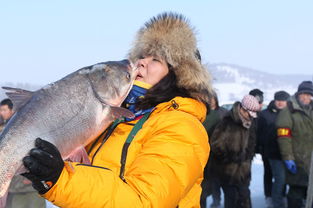Content:
Outdoor fishing is a cherished pastime that allows enthusiasts to connect with nature and enjoy the tranquility of the great outdoors. Whether you're a seasoned angler or a beginner looking to explore the world of fishing, mastering the technique for catching small fish is essential. In this article, we'll delve into the intricacies of outdoor fishing and provide you with valuable tips on how to effectively target and catch small fish.
Understanding Small Fish Behavior
Before you can effectively catch small fish, it's crucial to understand their behavior. Small fish, such as panfish, minnows, and sunfish, are often found in shallow waters, near cover, and in areas with abundant food sources. They are generally more skittish and less likely to bite than larger fish, so patience and precision are key.
Choosing the Right Equipment
The first step in catching small fish is selecting the appropriate equipment. Here's a breakdown of the essential gear you'll need:
Rod and Reel: For small fish, a lightweight spinning rod with a light-action reel is typically ideal. This combination provides the sensitivity needed to detect subtle bites and the flexibility to handle smaller fish.
Line: Use a monofilament line with a diameter of 4 to 6 pounds. This thickness strikes a balance between being strong enough to handle small fish and thin enough to avoid spooking them.
Lures and Baits: Small fish are often attracted to natural-looking baits and lures. Options include small spinners, jigs, worms, and grubs. Choose baits that mimic the natural prey of the fish you're targeting.
Hooks: Small hooks, typically 1/16 to 1/8 ounce, are best for small fish. Ensure the hooks are sharp to improve your chances of a successful catch.
Fishing Techniques for Small Fish
Patience is Key: Small fish can be elusive, so it's important to be patient. Spend time observing the water and the fish before attempting to fish. Look for signs of activity, such as splashes or movement, which can indicate the presence of small fish.
Cast Carefully: When casting, be gentle to avoid spooking the fish. Use a gentle, sidearm cast to present your bait or lure as naturally as possible.
Work the Bait Slowly: Small fish often take longer to notice and bite on a lure or bait. Work it slowly, allowing it to sink and swim naturally. Vary the speed and retrieve to mimic the movement of real prey.
Use a Bobber: If you're fishing with live bait, a bobber can be a useful tool. It allows you to control the depth of your bait and detect subtle bites.
Adjust Your Technique Based on Conditions: Pay attention to weather, water temperature, and other environmental factors. These conditions can influence the behavior of small fish, and adjusting your technique accordingly can increase your chances of success.
Common Techniques for Catching Small Fish
Surface Fishing: Use small lures or baits that mimic insects, minnows, or other surface prey. Cast out and retrieve the bait at a slow pace, watching for any indication of a bite.
Bottom Fishing: For fish like sunfish, try fishing near the bottom with a worm or grub. Allow the bait to settle and then gently twitch it to mimic a struggling worm.
Jigging: Use a jig with a small hook and a plastic or rubber body. Work the jig through the water column, varying the speed and depth to attract small fish.
Still Fishing: Sometimes, the simplest approach is the most effective. Still fishing involves casting out and leaving the bait or lure to sit motionless in the water, waiting for a bite.

Conclusion
Catching small fish in the wild can be a rewarding and enjoyable experience. By understanding the behavior of small fish, choosing the right equipment, and employing effective fishing techniques, you'll be well on your way to becoming a skilled angler. Remember, the key to success is patience, practice, and a keen awareness of the water and its inhabitants. Happy fishing!












